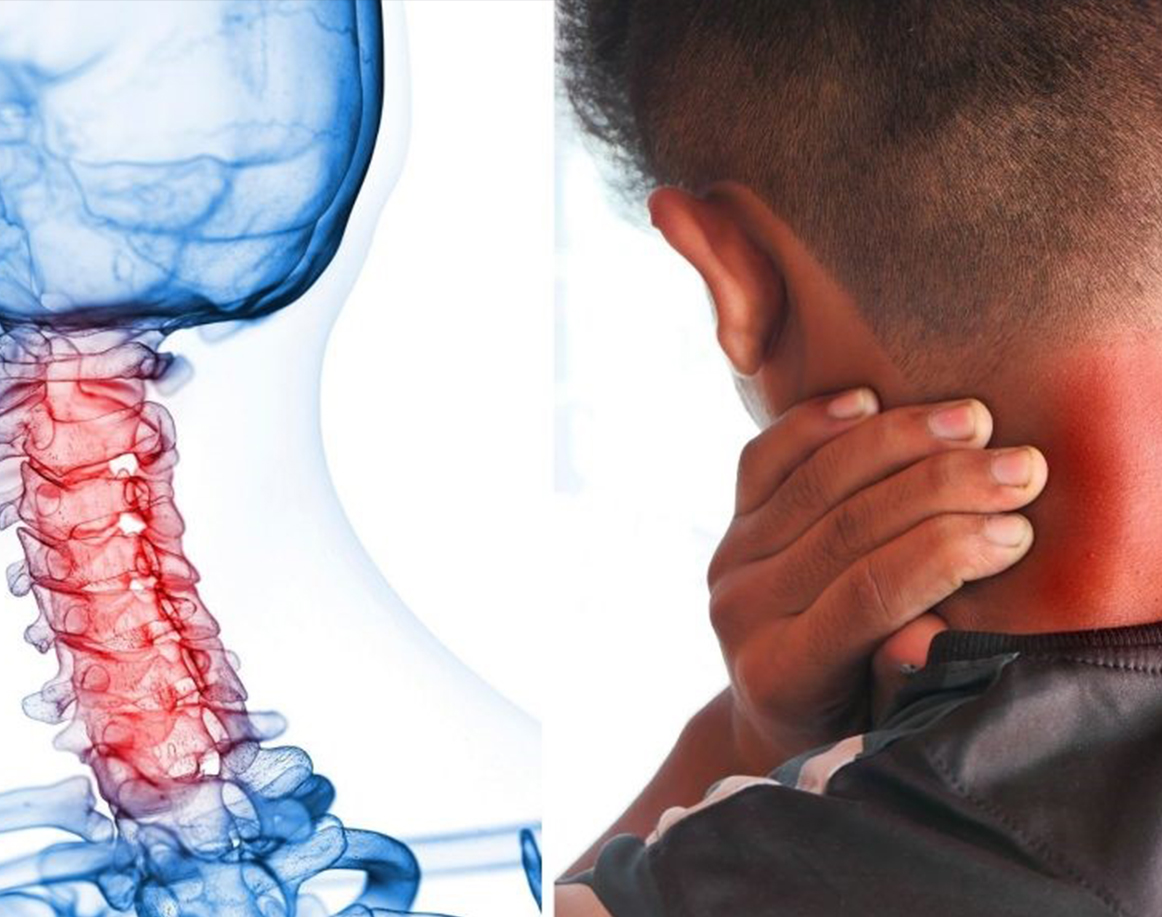
LOSS OF CERVICAL LORDOSE
What it is:
The vertebral column consists of three physiological curves that give it its strength and flexibility. A healthy ‘cervical lordosis’ refers to the natural curvature of the spine in the cervical part. Disorders in these curvatures bring discomfort and can become the cause of various pathologies. When one suffers from loss of neck lordosis, the neck can become abnormally straight.
Causes:
The loss of cervical lordosis can come from various causes, but it mainly comes from maintaining a wrong posture during everyday life and from the weakening of the muscles over time.
Symptoms:
At first, the patient feels constant neck pain due to muscle tension but over time the symptoms may worsen. Initially, the change in the posture of the cervical spine is noticed, where the neck is held straight and the head is held forward.The loss of cervical lordosis:
- disturbs the entire biomechanics of the spine by weakening the muscles,
- makes it more susceptible to injuries
- does not allow the cervical column to support the head equally
- increases the pressure on the intervertebral discs, influencing the acceleration of the disc degeneration process.
This leads to the appearance of other neurological symptoms, i.e. of nerve origin such as:
- Headache
- Dizziness
- Nausea (Feeling of vomiting)
- Loss of balance
- Numbness that can be referred to the elbow or to the fingers
Diagnosis
Diagnosis of the loss of cervical lordosis is done through physical examination and imaging. During the physical examination, the patient explains the symptoms while the specialist examines the musculature, posture and performs the necessary muscle tests and measurements. If the specialist deems it reasonable, he can refer you for additional imaging examinations such as x-rays or magnetic resonance imaging (MRI).
How is the loss of cervical lordosis treated with physiotherapy?
In the “Physiolife Therapy” practice, for the rehabilitation of the loss of cervical lordosis, manual therapy, exercise therapy and, if necessary, different modalities and devices are applied. During manual therapy, the identification of muscular imbalances in the neck is identified, because during the loss of cervical lordosis, some muscles are excessively elongated while others are contracted. Specific techniques are used to restore the muscular balance. After restoring the muscular balance, manual traction is used, a technique technique for widening the intervertebral space because during the loss of lordosis the vertebrae come closer than they should and give neurological symptoms that you may have such as headaches or dizziness. Finally, specific exercise therapy is used with exercises depending on the patient’s condition for stimulating the return of the arch and strengthening the muscles
